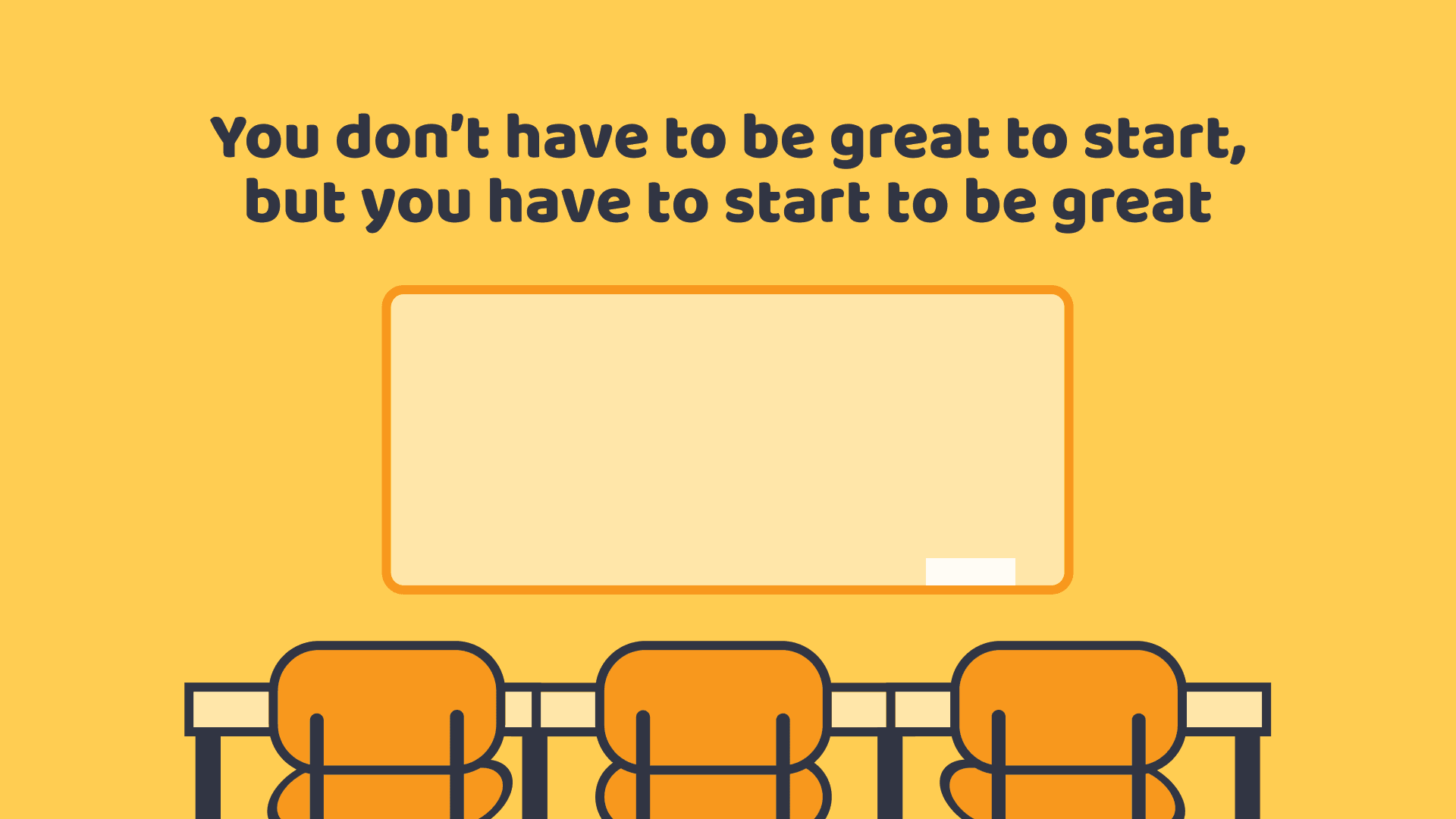5 Noise management classroom strategies
In this guide
Hearing students chatting, discussing ideas, and getting feedback in a classroom is expected and encouraged; however, when that noise level gets out of control, it can disrupt the learning environment and cause more headaches than learning opportunities.
There are a variety of strategies you can use to help manage your classroom’s noise level.
Strategies for managing noise in the classroom
Noise is everywhere, from students entering your classroom after lunch to the whispers of students getting off-topic during a math lesson. There can be productive noise that shows your students are engaging deeply with the content, and there can be destructive noise that may throw you into disarray. I know it happened more than once for me, too!
Luckily, as educators, we have numerous techniques and strategies for managing noise. This article will examine five strategies and give practical examples you can use immediately in your classroom.
A note on noise
Before sharing the strategies below, it should be mentioned that noise isn’t bad! Noise signifies different things to people in a classroom, but remember that noise can mean your students are engaging in a discussion, asking questions, or supporting someone in their learning.
I’m sure when someone passed by my classroom, they may have wondered what was going on due to the noise level. However, that noise was almost always productive – students were engaging in a hands-on science lab or partaking in a cooperative learning structure that encouraged them to increase their decibel level a bit. In this case, noise meant learning!
So, while reading these strategies, consider how your students engage with your content when establishing a strategy to manage noise.
1) Establishing clear expectations
Before a lesson starts, have a plan in mind. Establishing clear expectations for how your students will discuss and engage with you, the content, and each other allows students to understand what is expected in the classroom. This could involve creating a noise level chart in your classroom and setting specific activities or times according to the noise level.
For example, in my classroom and school-wide, we had a noise level chart that we referenced throughout the year.
- 0 – No sound, no talking
- 1 – Whisper (only one other person can hear you)
- 2 – Table Talk (normal voice, 3-4 students working in a group)
- 3 – Loud Crowd (talking to large group; teacher teaching a class)
- 4 – Emergency (yelling)
At the start of the year or whenever you want to introduce the noise level chart, you can practice modeling what each level sounds and looks like in the classroom to help meet norm expectations. It’s also a great idea to get your grade-level teaching partners on-board too so that it can be reinforced in every class and in common areas.
Setting noise expectations also allowed students to understand when we were transitioning to a new activity. If we are transitioning from a 2 to a 0, students may be going from group work to independent work. This structure allows students to prepare mentally for their next task.
If you choose to try it, there are many ways to set norms and expectations in your classroom and fun ways to illustrate the levels. So get creative!

2) Engaging attention from the start
Similar to setting expectations is engaging your students’ attention from the start.
Getting my students into their seats after the passing period was a chore. They wanted to talk; there was a lot of movement in the hall and many opportunities to get distracted before heading to their seats. If my students were distracted coming into the room, the first quarter of the lesson was sometimes lost trying to grab my students’ attention back.
There are many ways to grab your students’ attention when they enter the room. One example is a Bell Work activity to grab your students’ attention in the classroom immediately. I used this strategy every period of every day in my middle school classroom. I had several questions on the screen, and the expectation was to start working on them from the get-go. This structure was consistent, established clear expectations, and provided a structure to the learning environment.
In elementary classrooms where students are in the same room all day, a morning meeting may be a good way to grab students’ attention. I taught in a third grade classroom, and I found them to be a great way to build community with students and start their day on a positive note. There are many ways to structure a morning meeting, but typically they involve:
- Greeting students
- A share out where students share something from their lives or how they are feeling
- A group activity that builds connections and gets students to turn on their brains.
- A morning message or a message from the teacher can set the day’s theme or mood.
At middle and high school levels, morning meetings can be harder to implement if you have limited time with your students as they transition from class to class. Instead, you can set up daily themes in your classroom that can build community and help students engage with classroom material. As a middle school teacher, I linked these themes to the unit of work or to something in the news that related to what we were learning in class. It was a great way to engage students in what they were learning, as well as make it relevant to what was going on in the world at that point in time.
3) Implementing silent cues
A picture is worth a thousand words. Visual silent cues are a great way to grab the attention of students at all learning levels.
This cue can take many forms. Some teachers raise their hands silently, and then the rest of the class raises their hands to signal that we all need to be silent right now. With some particularly chatty classes, I would raise my hand with 5 fingers showing, then gradually put down 1 finger at a time until they were all down, at which point, students knew it was time to be silent.
I’ve also heard many elementary teachers use callbacks: “One, two, three, eyes on me,” with students responding, “One, two, eyes on you.” Another good one is, “hey class!” and the class responds, “hey what?” Regardless of the callback, students are aware that they need to be silent immediately following the callback.
How you use a visual or silent cue is up to you. A top tip is always to make it something you want to do. If raising your hand to get your class to get quiet slowly isn’t your thing, that is fine! In the early stages, you will need to practice the cue with your students until it sticks, so make sure it is a cue you will want to repeat!

4) Utilizing reinforcement strategies
You will need to practice your strategies to help students remember what they are and why you are using them. Sometimes, you may need an extra push to help them remember. This is where a reinforcement strategy can come in.
Some classrooms use a traditional reinforcement strategy, such as setting up a points system to track positive behavior or passing out tickets that can be redeemed for prizes. These reinforcements are tied to practical things the students can earn. Prizes don’t need to be tangible items though; they can be things like having lunch with the teacher or choosing your seat for the day.
In my middle school classroom, we used ClassDojo, a free website where each student was assigned a fun character. I would reward points for positive behaviors which were compiled into individual student reports that they received at the end of the week. Once they reached a specific number of points, they were able to trade them in for prizes.
ClassDojo can also work at the high school level, but with some modifications. Teachers can set up a dojo for each class they teach. Afterward, you can create specific categories instead of generic points for positive or negative behaviors.
For example, in high school, you may have fewer rules in the classroom because students can manage themselves better. You may be looking for visible examples of learning like participation, collaborating well with others, and excellent time management. You can add these to the positive categories so while you are in the classroom observing students, you can add points easily. This is also helpful if you keep track of your student’s daily participation for a grade.
Another form of positive reinforcement is behavior narration. With this method, you narrate out loud when you see instances of the behavior you want to encourage. In my classroom, I would walk around the room observing my students. If I asked my students to prepare for a lab, I would say, “Alex, thank you for having your table clear and lab report ready.” When students need to get quiet to listen to directions, I would say, “I like how Mariana is sitting quietly with her eyes on me.”
The benefit of this technique is it accomplishes a few things at once. You can narrate the behavior you want to see and repeat instructions. Maybe your student didn’t hear you ask them to take out last night’s homework. With the narration, they can hear what the expectations are and achieve them.
This technique works at all school levels. I found that in my middle school classroom, students were eager to gain admiration from adults that they respected. Positive narration lets students know they are on track and sets them up for success in learning.
However, it should be noted that you may want to modify your strategy with high school students. Older students will want to engage in dialogue like young adults, not children. Your narration could be more general and incorporate humor to connect with your students. For example, you can make general observations like “50% of the class is ready to start the task with their pens and paper out.” Or you can make it funny with references your class understands and would find humorous.
It can feel silly at first! Your students may wonder what is going on, but soon, they will see you are pointing out the behavior you want to see and praising them. We all want to feel like we are doing a good job and reinforcement strategies are perfect for this.

5) Creating controlled environments
There is a lot of activity outside your classroom. Your students can come in with baggage from home, or something may have happened in the hallway or previous class. Remember that your classroom is your space to share with students, and you can control the environment.
For noise management, this could mean a few things. Some teachers utilize the lights or sounds in their classrooms to create an environment that promotes calmness and thinking. You can dim your lights for independent practice or put on calming music.
You can also create group interactions that promote expectations of noise level or classroom interaction. If you want your students to engage in quiet peer work, you can have a space in your classroom where two people can easily sit together to start working. Or, you can give your students time to move their desks in a way that promotes peer-to-peer learning that minimizes distractions from other students. I allowed my students to choose any spot in the room for this purpose, as long as they were not a distraction to others. As another example, during independent work time, I would provide flexible seating so students could sit or lie down and be comfy while they worked.
If your school allows it, you can have older students head to the library or sit in the hallway. When I taught middle school, this was a privilege that students could earn by following the expectations inside the classroom. They enjoyed it and worked hard to continue earning this privilege. However, these privileges must be approved by your administration in advance.
Do what works best for you
No matter which strategy you pick, there are three things to always remember.
- Noise isn’t always bad! Noise levels will differ from classroom to classroom, so consider your students and how they learn when establishing a strategy.
- You will need to practice, practice, practice. For some students, a habit can take several weeks to stick. Don’t get discouraged if it doesn’t immediately work out; keep reinforcing the behavior you want to see!
- Pick a strategy you want to use. The worst thing you can do is pick a strategy that will feel laborious and annoying. Make it something you want to do or feel engaged in using.
The last thing to remember is to share strategies with your fellow educators and learn best practices from each other! Your school team can have a great idea that could be shared, so always take time to share and learn with your peers.
References
- ablconnect.harvard.edu. (n.d.). Do Now. [online] Available at: https://ablconnect.harvard.edu/do-now-description
- ClassDojo (n.d.). ClassDojo. [online] ClassDojo. Available at: https://www.classdojo.com/en-us/ [Accessed 11 Feb. 2024].

Mark Brown
briefcase iconContent/Production Consultant
Mark spent 9 years as a middle school teacher before transitioning to the educational technology field. He was formerly the US Content Lead for ClickView, and has continued with the organization as a content and production consultant, contributing to curated topic pages, educator articles, and the production of new videos.
Other posts
Want more content like this?
Subscribe for blog updates, monthly video releases, trending topics, and exclusive content delivered straight to your inbox.












